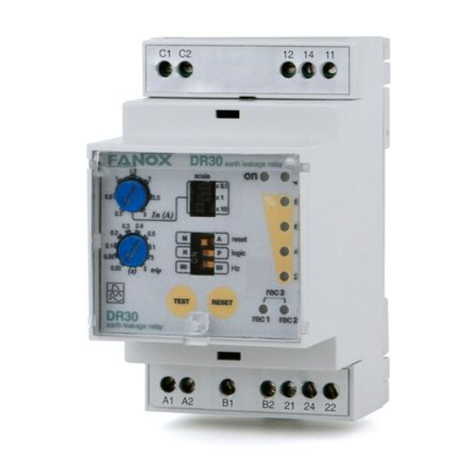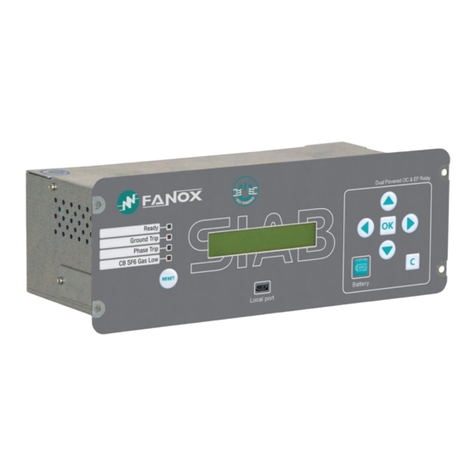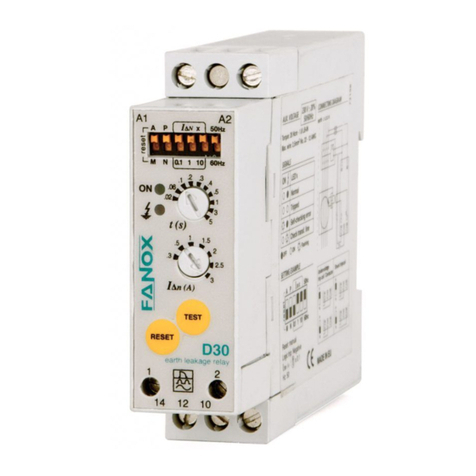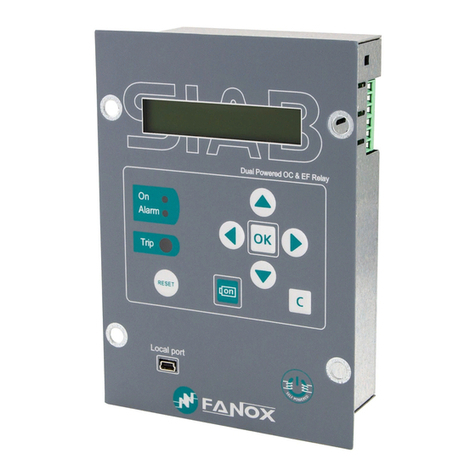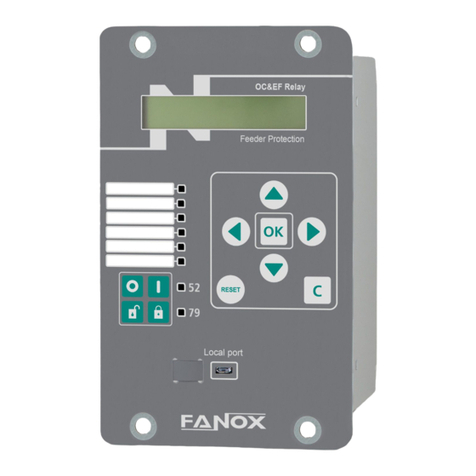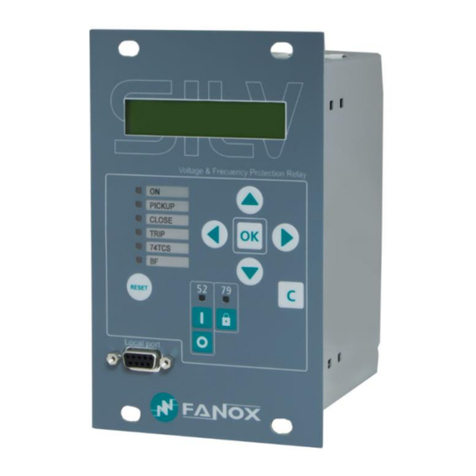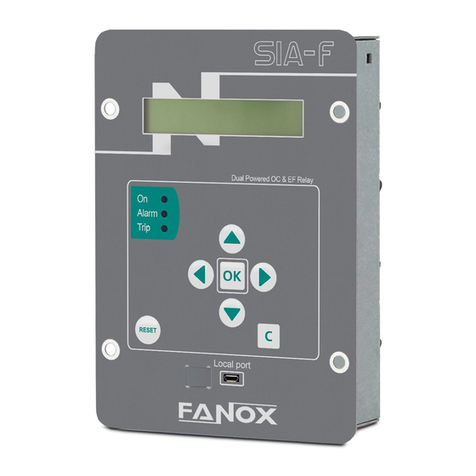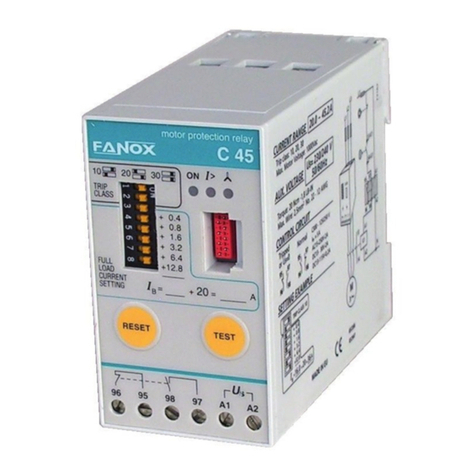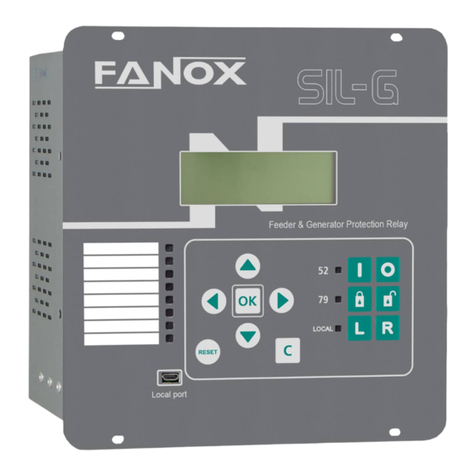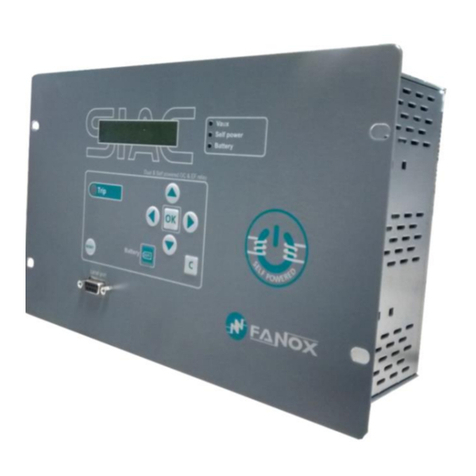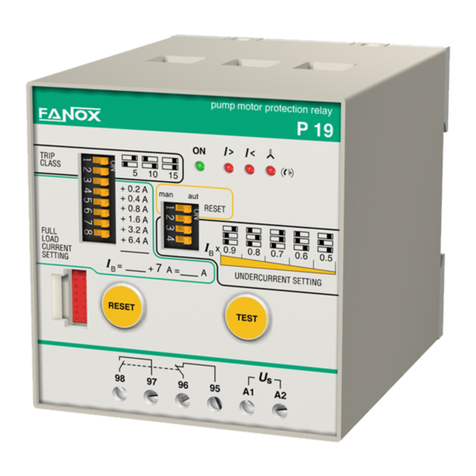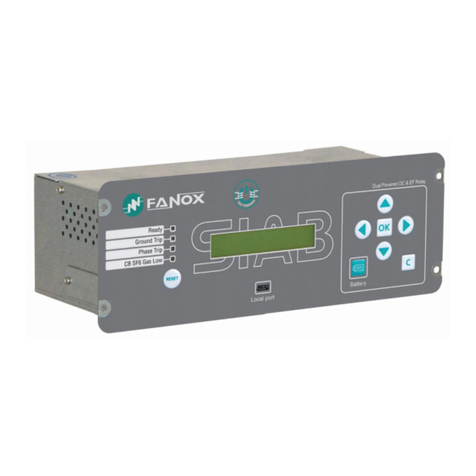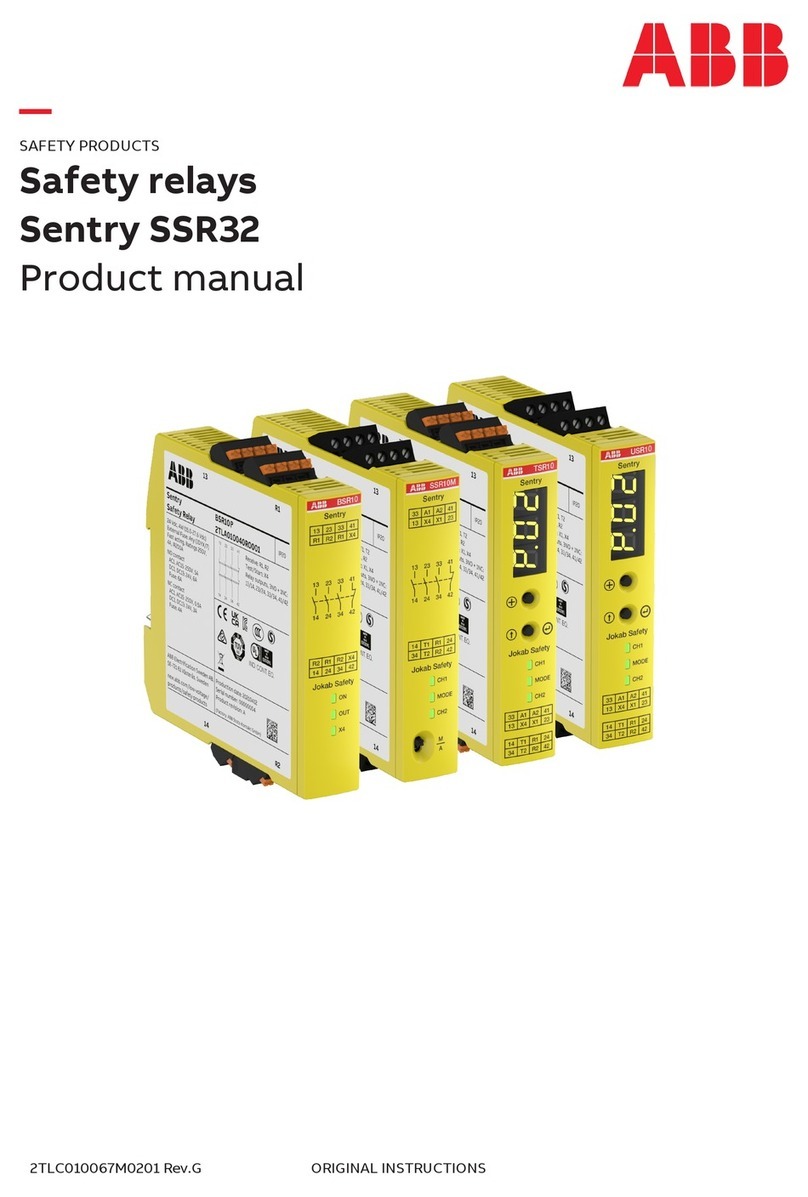www.fanox.com Rev.17 2/119
1. RECEPTION, HANDLING & INSTALLATION..................................................................................5
1.1. Unpacking.........................................................................................................................................5
1.2. Reception of relays..........................................................................................................................5
1.3. Handling electronic device.............................................................................................................5
1.4. Installation, commissioning and service ......................................................................................6
1.5. Storage..............................................................................................................................................6
1.6. Recycling..........................................................................................................................................6
2. DIMENSIONS AND CONNECTION DIAGRAMS .............................................................................7
2.1. Frontal view......................................................................................................................................7
2.2. Case dimensions .............................................................................................................................8
2.3. Connection diagram........................................................................................................................9
2.4. Terminals..........................................................................................................................................11
3. DESCRIPTION ..................................................................................................................................12
3.1. Introduction......................................................................................................................................12
3.2. Device description...........................................................................................................................12
3.3. Functional Diagram .........................................................................................................................15
3.4. Selection & Ordering codes............................................................................................................16
3.5. Phase CT and neutral CT selection ...............................................................................................17
3.5.1. External current transformers advantages ..........................................................................17
3.5.2. Load curve for relay SIA-F/1 ..................................................................................................18
3.5.3. Load curve of relay SIA-F/5....................................................................................................18
4. PROTECTION FUNCTIONS .............................................................................................................19
4.1. 50 Function. Phase instantaneous phase overcurrent................................................................19
4.2. 50/51 Function. Phase inverse time overcurrent..........................................................................19
4.3. 50N/G Function. Neutral instantaneous overcurrent...................................................................20
4.4. 50/51N/G Function. Neutral inverse time overcurrent .................................................................21
4.5. Cold Load Pickup ............................................................................................................................21
4.6. Trip block protection for the switchgear.......................................................................................23
4.7. 52 Function. Circuit breaker monitoring .......................................................................................23
4.7.1. Circuit breaker opening and closing commands ................................................................25
4.7.2. Counter to register the number of openings .......................................................................25
4.7.3. Counter to register the accumulated amps: I2t ...................................................................25
4.7.4. Excessive openings per time.................................................................................................26
4.8. 49 Function. Thermal Image Protection ........................................................................................26
4.9. 50BF Function. Circuit Breaker opening fault ..............................................................................29
4.10. 68 Function. Trip Bus......................................................................................................................30
4.11. General Settings ..............................................................................................................................31
4.12. Setting Group...................................................................................................................................32
4.13. IEC 60255-151 Curves .....................................................................................................................33
4.14. IEEE Curves......................................................................................................................................37
4.15. Application examples......................................................................................................................41


